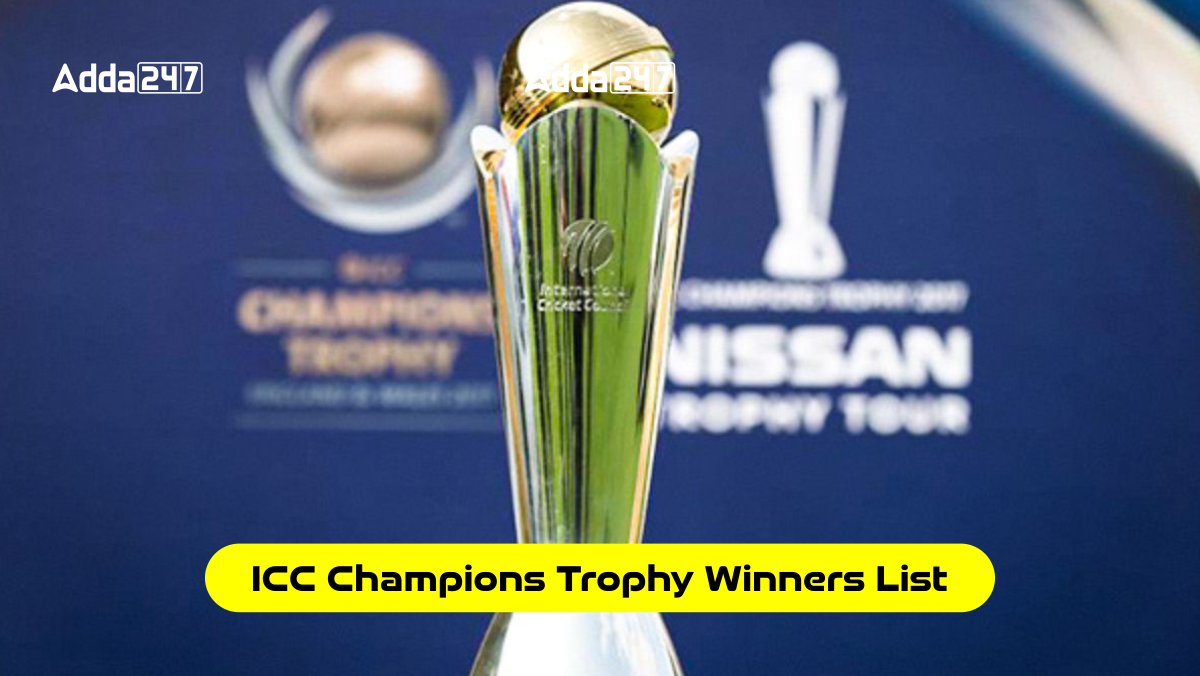The ICC Champions Trophy, introduced in 1998 as the ICC Knockout Tournament, was initially aimed at funding cricket in non-Test nations. Due to its success, major cricketing nations later hosted it. From 2009, only the top eight ICC ODI teams competed. After the 2017 edition, it was discontinued to streamline ICC events.
However, in 2021, the ICC announced its return in 2025 (Pakistan) and 2029 (India). If India opts out of playing in Pakistan, they may also skip ICC events held there. On 16 November 2021, the ICC announced that the 2029 edition of the ICC Champions Trophy would be held in India. It is expected to be played in October to November 2029.
ICC Champions Trophy Winner List- Captain Wise
Here’s the complete list of Champions Trophy winners from 1998 to 2025. The 2025 winner is India, with the tournament taking place in Pakistan and the UAE.
| Year | Winner | Captain |
| 1998 | South Africa | Hansie Cronje |
| 2000 | New Zealand | Stephen Fleming |
| 2002 | Sri Lanka and India | Sourav Ganguly/Sanath Jayasuriya |
| 2004 | West Indies | Brian Lara |
| 2006 | Australia | Ricky Ponting |
| 2009 | Australia | Ricky Ponting |
| 2013 | India | MS Dhoni |
| 2017 | Pakistan | Sarfaraz Ahmed |
| 2025 | India | Rohit Sharma |
Champions Trophy Winners List (1998-2025)
The Champions Trophy is a prestigious cricket tournament held by the International Cricket Council (ICC), featuring the top teams in the world competing for the title. Below is the list of Champions Trophy winners from 1998 to 2025, showcasing the countries that have dominated the tournament over the years.
| Year | Host Nation(S) | Winner | Runner-Up |
| 1998 | Bangladesh | South Africa |
West Indies
|
| 2000 | Kenya | New Zealand | India |
| 2002 | Sri Lanka | Sri Lanka and India | None |
| 2004 | England | West Indies | England |
| 2006 | India | Australia |
West Indies
|
| 2009 | South Africa | Australia |
New Zealand
|
| 2013 | England and Wales | India | England |
| 2017 | England and Wales | Pakistan | India |
| 2025 | Pakistan | India | New Zealand |
ICC Champions Trophy Winners List (Year-Wise)
Here’s the complete list of Champions Trophy host nations and winners from 1998 to 2025. The upcoming 2025 edition will be hosted by Pakistan and the UAE, with the winner yet to be decided.
| Year | Host Nation(s) | Winner(s) |
| 1998 | Bangladesh | South Africa |
| 2000 | Kenya | New Zealand |
| 2002 | Sri Lanka | India and Sri Lanka |
| 2004 | England | West Indies |
| 2006 | India | Australia |
| 2009 | South Africa | Australia |
| 2013 | England and Wales | India |
| 2017 | England and Wales | Pakistan |
| 2025 | Pakistan and United Arab Emirates | India |
Last Champions Trophy Winner
As of February 25, 2025, the ICC Champions Trophy is currently underway, with the final match yet to be played. The tournament is scheduled to conclude on March 9, 2025. Therefore, the most recent completed edition of the ICC Champions Trophy was held in 2017, where Pakistan emerged as the champions. In the 2017 final, Pakistan defeated India by 180 runs at The Oval in London. Pakistan posted a total of 338/4 in their 50 overs, and India was bowled out for 158 in 30.3 overs.
How Many Times India Won Champions Trophy?
India has won the ICC Champions Trophy twice:
- 2002 (Joint winners with Sri Lanka)
- 2013 (Champions defeating England in the final)
- 2025 – Defeated New Zealand in the final
India’s victories in the tournament have solidified its dominance in limited-overs cricket, with memorable performances from legendary players.



 J&K Set for International Indian Sty...
J&K Set for International Indian Sty...
 List of Winners at FIFA Best Football Aw...
List of Winners at FIFA Best Football Aw...
 Prashant Veer and Kartik Sharma Become J...
Prashant Veer and Kartik Sharma Become J...







